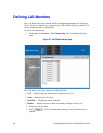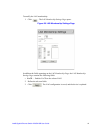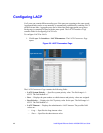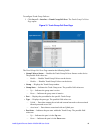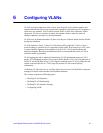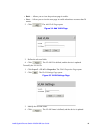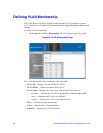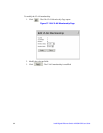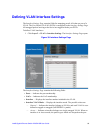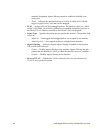
Intel® Gigabit Ethernet Switch AXXSW1GB User Guide 47
6 Configuring VLANs
VLANs are logical subgroups with a Local Area Network (LAN) which combine user
stations and network devices into a single unit, regardless of the physical LAN segment to
which they are attached. VLANs allow network traffic to flow more efficiently within
subgroups. VLANs use software to reduce the amount of time it takes for network
changes, additions, and moves to be implemented.
VLANs have no minimum number of ports since they are software-based and not defined
by physical attributes.
VLANs function at Layer 2. Since VLANs isolate traffic within the VLAN, a Layer 3
router working at a protocol level is required to allow traffic flow between VLANs. Layer
3 routers identify segments and coordinate with VLANs. VLANs are Broadcast and
Multicast domains. Broadcast and Multicast traffic is transmitted only in the VLAN in
which the traffic is generated.
VLAN tagging provides a method of transferring VLAN information between VLAN
groups. VLAN tagging attaches a 4-byte tag to packet headers. The VLAN tag indicates to
which VLAN the packets belong. VLAN tags are attached to the VLAN by either the end
station or the network device. VLAN tags also contain VLAN network priority
information.
Combining VLANs and Generic Attribute Registration Protocol (GARP) allows network
managers to define network nodes into Broadcast domains.
This section contains the following topics:
• Defining VLAN Properties
• Defining VLAN Membership
• Defining VLAN Interface Settings
• Configuring GARP




